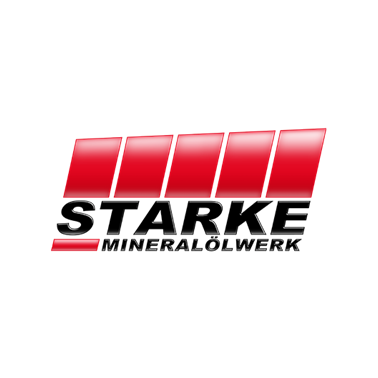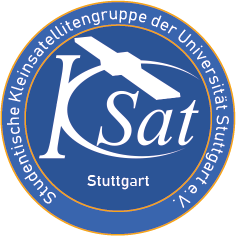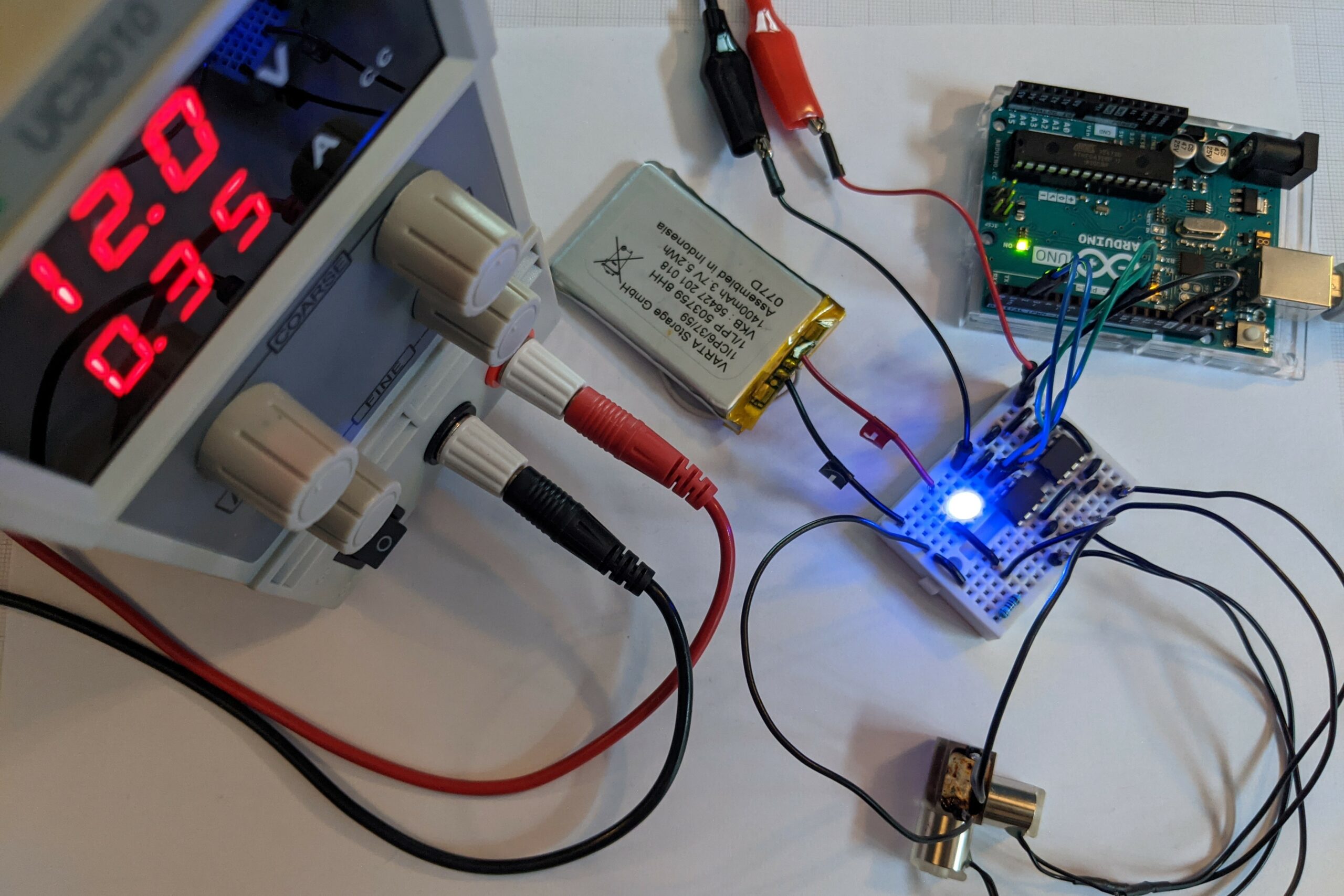
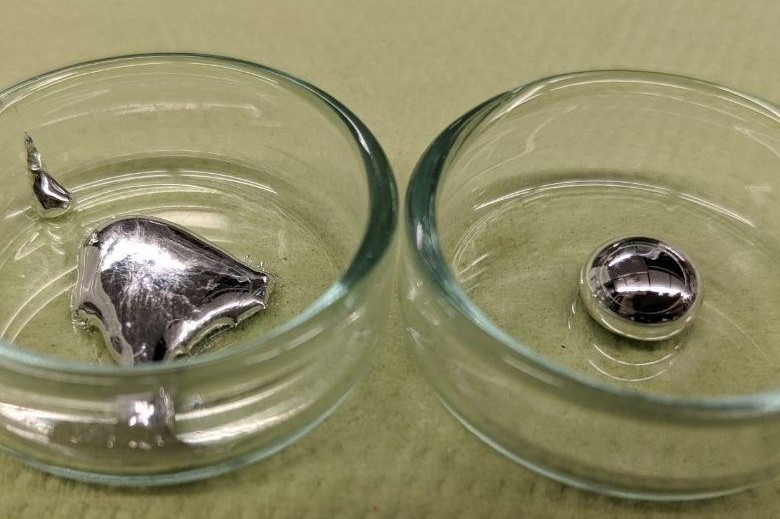
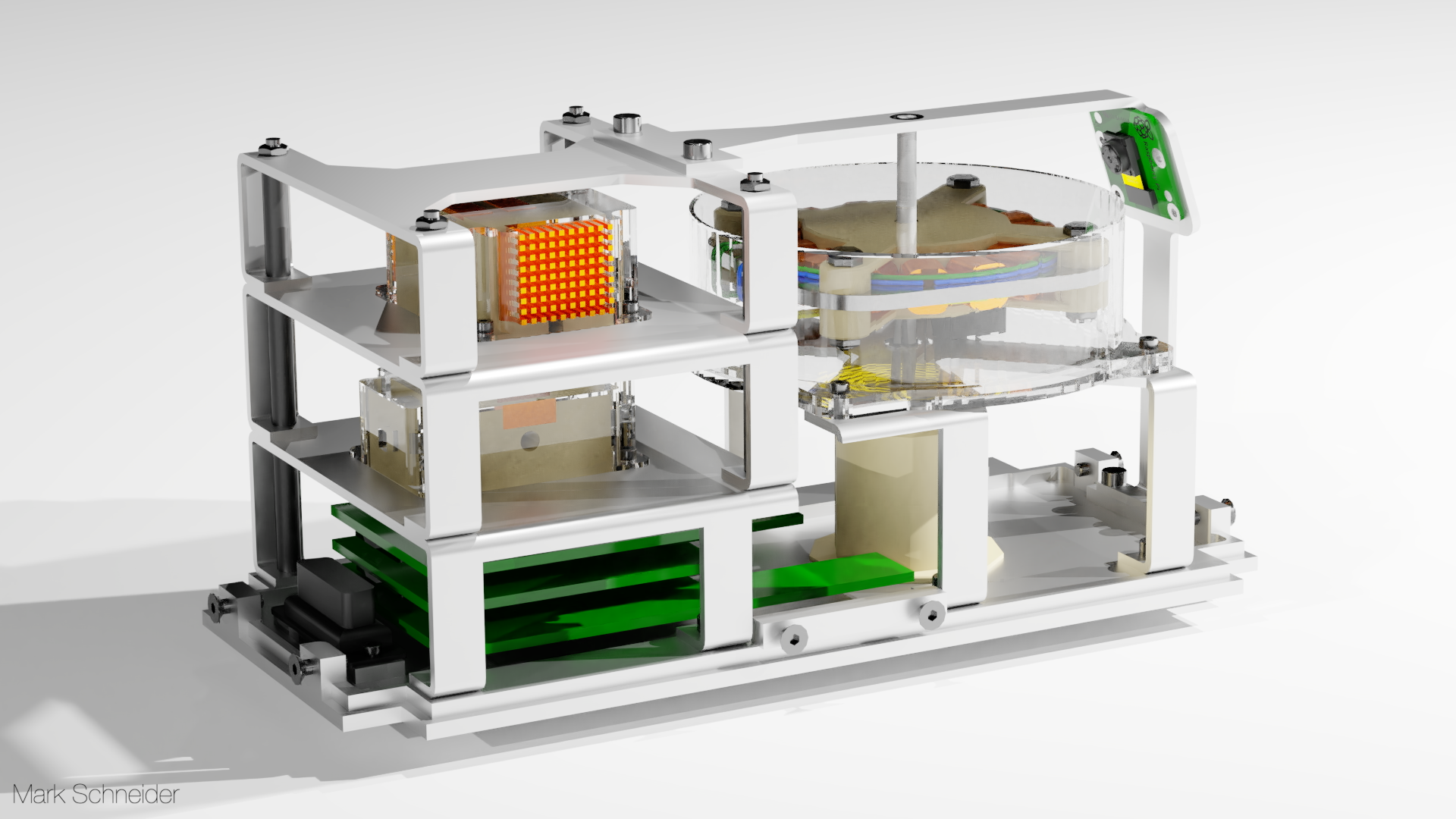

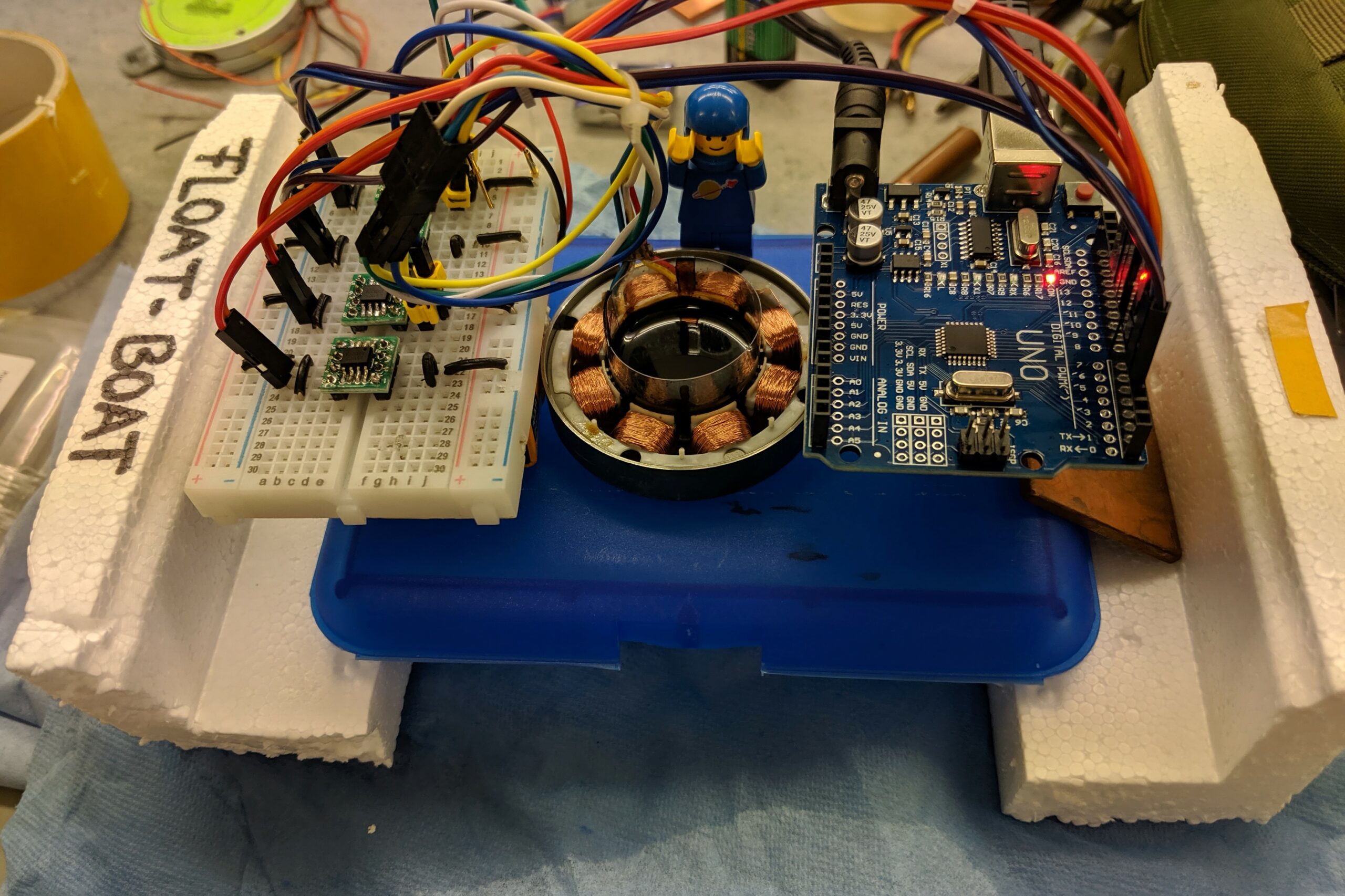
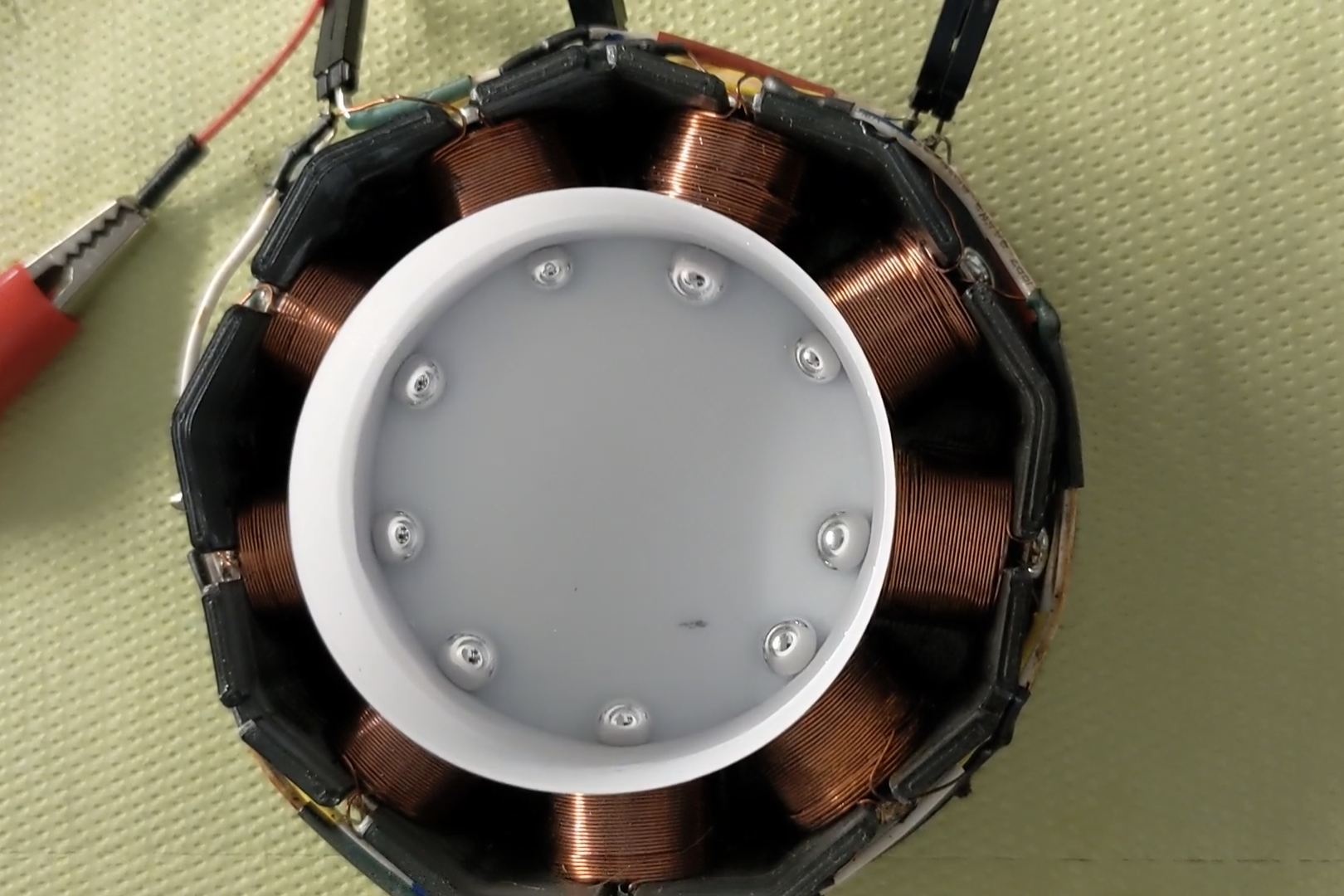
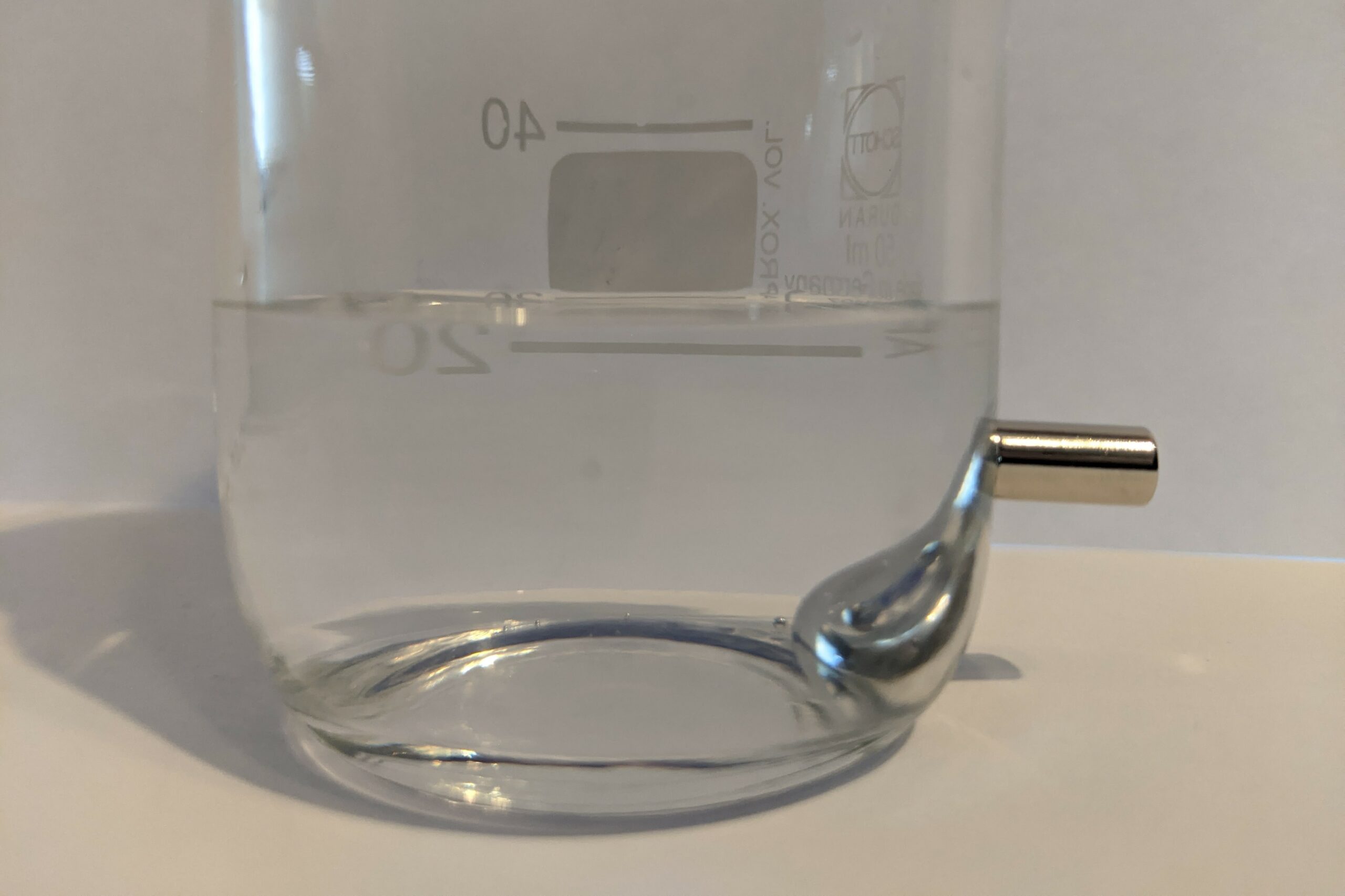
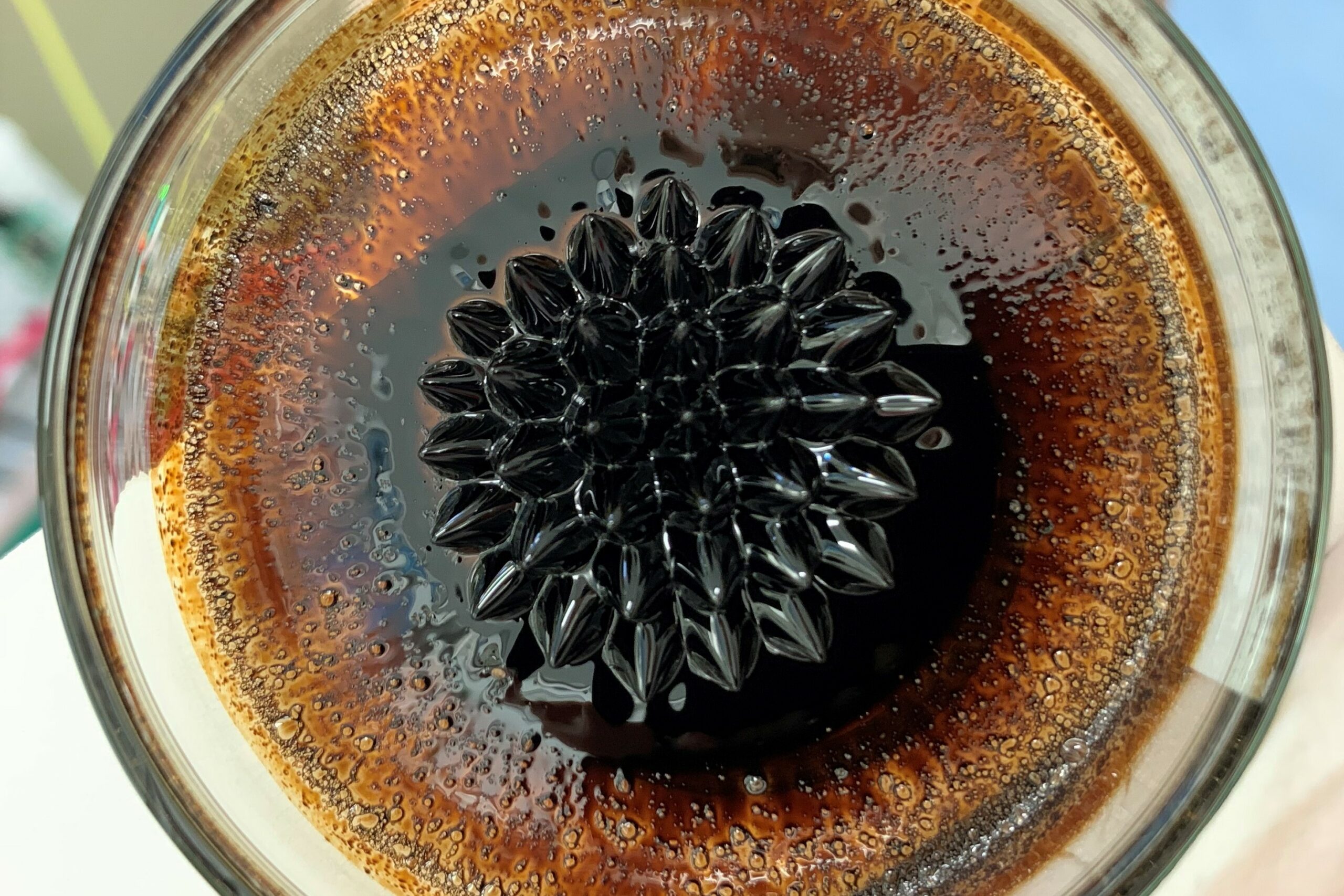
What is FARGO
With our new ferrofluid project FARGO (Ferrofluid Application Research Goes Orbital), we were successful in the DLR’s Überflieger2 selection workshop. As one of 4 projects, we are now able to operate FARGO on the ISS, probably at the end of 2022 or beginning of 2023. The experiment is divided into 3 sub-experiments: two different switches, one electrical and one thermal switch, as well as a attitude control concept. Ferrofluids are liquids consisting of a carrier liquid, in most cases an oil, and magnetic particles suspended and coated in it. Research with ferrofluids already has a tradition of several years at Ksat. With our experiment PAPELL (Pump Application using Pulsed Electromagnets for Liquid reLocation), we were already able to prevail in the Überfleger 1 competition, and thus demonstrate the basis of a pump technology using ferrofluid on the ISS in 2018. In order to be able to investigate the effects and applications in realistic space conditions, the ferrofluid applications are being further developed within the KSat project for the ISS mission. For this purpose, a team of 21 members has been formed, supported by 2 IRS PhD students.
Fly Your Name to Space [on FARGO]
We enable YOU to fly your name to the ISS with us!
Motivation and interesting facts about our project
Vision
u003cpu003eFerrofluids offer the possibility of realizing systems with as few moving parts as possible. Moving parts are generally prone to abrasion and therefore often suffer from high levels of wear and tear. To avoid this, ferrofluid can be actuated via magnets in order to enable pumping , for example. Therefore there is great potential here, especially for space applications, since components can’t be easily exchanged, if at all.u003c/pu003en
Diverse
At FARGO, not only is our experiment design diverse, we’ve got over 21 students from 7 courses from a multi-faceted team that is divided into 4 subsystems (+ PR): Electronics, Mechanics, Software and Science.
Extraordinary
We use ferrofluids in all of our experiments. These extraordinary fluids consist of a carrier liquid such as oil, water or, as we also use it, liquid metal, with added fine iron particles. This allows the ferrofluids to be moved with magnets – this offers a wide range of possible applications.
Experiments
At FARGO we want to develop and test 3 different ferrofluid applications. Among other things, were testing an experiment to investigate the Rosensweig instability, two different attitude control experiments, a cylinder pump, as well as an electrical and a thermal switch. The team is working tirelessly to build the experiments for experimantation under microgravity.The Experiments
Thermal – Switch
The harsh environment in space are characterised by extreme temperature differences. While on the side facing the Sun extreme heat develops on a satellite surface, the reverse occurs on the shadow side. The resulting heat flow, which is irregular in time, position and direction, leads to temperature peaks and gradients that can affect the system’s performance, operability and reliability, as these loads must be taken into account. Through the thermal switch we are developing, these heat loads can be actively switched by ferrofluid manipulation.
Electrical – Switch
Mechanical moveable parts are susceptible to wear and tear. Especially in space applications, maintenance or replacement is usually challenging and expensive. The development of an electrical switch without mechanical moving parts, which can switch higher loads compared to transistors, might represent an important development step for long-term missions. For this purpose, the electrical switch developed by us is to be tested on the ISS with various loads and verified for this environment.
ACS BLDC
The idea behind the development of a new type of attitude control component is to reduce the use of wear-intensive parts. The attitude control component (momentum wheel) is based on the functionality of a BLDC motor (brushless directed current motor). The structure of the stator that is equipped with coils is reused, but the rotor forms a heterogeneous system of ferrofluid and secondary fluid. The aim is to generate a uniform movement of the ferrofluid through targeted control of the coils. The ferrofluid transfers the angular momentum to the secondary fluid, which stores it (inertia).Subsystems
Science
The science team is responsible for planning and designing the actual experiments for FARGO. The main task of Science is to develop a sound theoretical and practical understanding of the individual experiments and to find ways of being able to test them while taking into account the requirements of the Überflieger 2 program. We are supported by all other subsystems for the design and building of the experiments.
Mechanics
The mechanics team has two main tasks: on the one hand, to support the scientific team in building and testing the experiments on the ground, on the other hand, to develop, manufacture and integrate the experiments for the Space-Tango module. The group is also responsible for simulations of both mechanical and thermal stress in order to refine and test the design.Elektronics
The electronics team deals with the electronic design of the experiments and the main system. This includes the selection of suitable components as well as the development and simulation of all necessary circuits. The group is also responsible for the manufacturing of the circuit boards and subsequent functional tests of all electronic system components.Software
The software team programs both the main computer and the individual experiment computers. This is done in close cooperation with the electronics and science teams, as science selects the data to be collected and electronics the sensors with which this data is to be collected. The software in the main computer takes over the communication with the rocket and the control of the experiment computers. The software on the experiment computers is responsible for controlling actuators, reading out sensors and saving the data of the respective experiment.
Timeline
Erreicht
Ausstehend
Aktuell
Zukunft
Proposal [15.10.21]
PDR [22.02.22]
CDR [22.07.22]
FRR [02.12.22]
Delta FRR [ca. 03.03.23]
Flight [11.03.23]
News
Überflieger 2 Programm
The “Überflieger” competition, offered by the DLR, offers students the opportunity to design their own experiment and run it on the ISS. In the first Überflieger or “high-flyer” challenge, KSat has already prevailed with a concept and was thus able to successfully test its “PAPELL” experiment on the ISS. With the data and results obtained, the FARGO team has now been able to develop further experiments and design promising prototypes. With these, the team applied for the “Überflieger2” challenge. The best proposals are then selected by experts from all applications in order to present their experimental ideas at a selection workshop at DLR Space Administration in Bonn. In addition, the teams have the opportunity to follow the rocket launch of their own experiment on site after completion. With this year’s applications, we hope to be able to send them on a trip to the ISS as early as next year.
Friends, partners and sponsors



